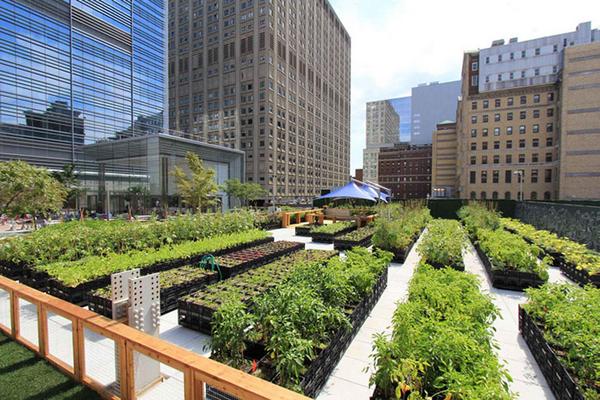City Blooming - The Facts
Table of ContentsSome Known Factual Statements About City Blooming What Does City Blooming Do?How City Blooming can Save You Time, Stress, and Money.5 Easy Facts About City Blooming ShownCity Blooming - Truths
Intrigued in growing food available in the City of Chicago? Considering beginning a community yard? Modifications to the Chicago Zoning Ordinance permit agricultural usages like community yards and metropolitan farms in several parts of the city. Below is a checklist of often asked questions pertaining to the guidelines and laws that cultivators should take into consideration when preparing a metropolitan agriculture job.
The zoning amendment does not customize any kind of other codes taking care of composting, structure permits, buying or renting City possessed residential or commercial property, service licenses or ecological contamination. There are existing codes that regulate these issues and they stay completely effect and may be relevant to your task. Neighborhood yards are usually had or taken care of by public entities, civic organizations or community-based companies and preserved by volunteers.
Urban ranches grow food that is meant to be marketed, either on a nonprofit or for-profit basis. Because of their industrial function, metropolitan ranches require an organization certificate. Yes. A community garden is allowed to sell surplus produce that was grown on website if the sales are accessory or subservient to the yard's key objective described over.
The 5-Second Trick For City Blooming
The quantity of compost product can not exceed 25 cubic lawns at any type of given time according to the criteria in 7-28-715 of the City's Municipal Code. Since the dirt at a lot of brand-new garden websites requires amending, garden compost, dirt, wood chips, or various other materials can be obtained to construct or improve the expanding area.

If a structure authorization is required after that the hoophouse will be considered an accessory structure. You can learn even more about the structure license needs by speaking to the Department of Structures. The 25,000-square-foot size restriction is meant to stop a solitary community yard from dominating a given block or detracting from the block's existing domestic or business personality.
The limit does not put on yards found in Public Open Room (POS) districts. Can there be greater than one area garden that is 25,000 square feet on a solitary block? Yes. The size restriction applies to private yards, not to individual blocks. No. Fencing is not needed, however, gardens that have large car parking areas might be required to set up fence or various other landscaping functions.
Getting My City Blooming To Work
B1 & B2 areas call for that all industrial use tasks be carried out indoors. Is secure fencing required for city ranches? Fences might be needed, along with landscape design and screening, for certain vehicle parking areas and exterior work or storage space areas depending on area and the certain activity taking area.
Yes. Urban farms require structure authorizations and zoning authorizations before construction. Other kinds of city evaluation may be needed relying on specific structures, activities, size, landscape design, licensing, public heath and stormwater management concerns. Numerous of these requirements are recognized in the job design or allowing process, however, the candidate may be liable to separately identify details licenses or permits that might be needed.
Yes. The sort of permit is figured out by what is happening at the site. The Division of Service Affairs and Consumer Defense can help figure out the details sort of service certificate that's required. Yes. Off street parking is required for the majority of commercial jobs in Chicago. The needed variety of car parking areas is based upon the variety of employees dealing with site and not the square video of the expanding room.
City Blooming for Dummies

Yes. A city farm can market compost material created on site, nonetheless, the operation must abide by the policies in 7-28-715 of the Chicago Municipal Code. Yes. Aquaponic systems are permitted indoors on urban ranches in numerous zoning areas. Nevertheless, a zoning testimonial and building permit is her comment is here required in order to set up frameworks or systems and an organization certificate is called for as defined above.
As much as five hives or swarms of honey may be kept as an accessory usage. Beekeepers should register with the Illinois Division of Agriculture. To learn more regarding the proposed zoning modification you may get in touch with the Department of Housing and Economic Advancement, Bureau of Planning and Zoning at 312.744.8563.
Farming in cities and city locations A metropolitan ranch in Chicago. Urban agriculture describes different practices of growing. http://peterjackson.mee.nu/where_i_work#c2252, processing, and distributing food in urban locations. The term additionally uses to the area activities of pet husbandry, tank farming, beekeeping, and gardening in a metropolitan context. Urban agriculture is distinguished from peri-urban farming, which occurs in rural areas at the side of suburban areas.
Getting My City Blooming To Work
, who look for to create social networks established on a common ethos of nature and neighborhood holism. These networks can develop by method of official institutional support, coming to be integrated right into regional town preparation as a "change community" activity for lasting urban development.
The much more straight accessibility to fresh veggie, fruit, and meat items that might be realised through urban agriculture can enhance food protection and food safety while lowering food miles, leading to reduced greenhouse gas exhausts, therefore adding to environment change mitigation. Some of the first evidence of city farming originates from Mesopotamia.